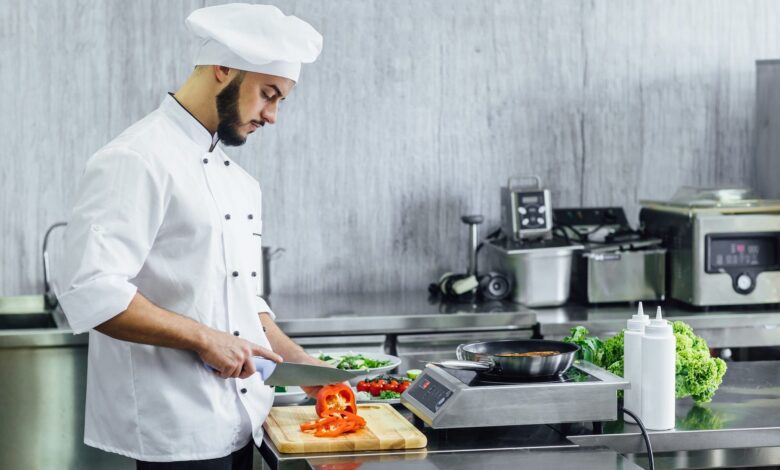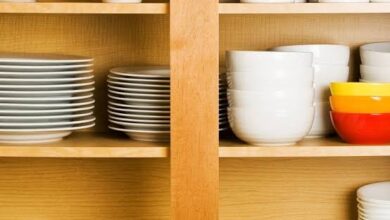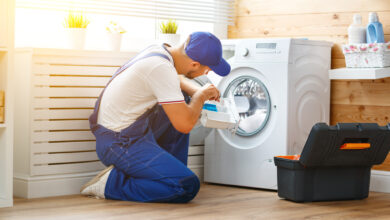Recognising the Dangers in a Commercial Kitchen: Addressing the Obstacles

A commercial kitchen is a busy, vibrant environment where chefs and workers work hard to create culinary delights. However, among the enthusiasm and innovation, there are various hazards that might jeopardise everyone’s safety. In a commercial kitchen, potential dangers can vary. However, some may necessitate prompt action from the responsible individuals or employers; else, the workplace’s health and safety may be jeopardised.
Understanding these hazards and taking proactive efforts to prevent them is critical for maintaining a safe workplace. In terms of ensuring a safe and secure working environment for your employees, these proactive steps can also account for your compliance with health and safety standards.
In this post, we will highlight five common risks in a commercial kitchen setting and offer you with recommendations on how you, as an employer, can avoid these hazards from endangering the health and safety of your employees.
Five Commonly Occurring Risks in a Commercial Kitchen
1) Food Safety: Protecting Customers and Staff
As an employer in a Commercial kitchen equipment in Saudi Arabia , you should make it your top goal to ensure that the food you deliver meets the standards you promised. The cuisine and service you provide will set you apart from the competition. As a result, all required precautions must be taken to ensure that the food being cooked in the kitchen is of the highest quality and fulfils all hygienic regulations.
Food is brittle, and even the smallest carelessness in preparing or handling it can cause it to spoil. Failure to maintain adequate cleanliness and implement food safety rules can result in foodborne illnesses, endangering the health of customers and employees. The consequences of such instances can be harmful to any establishment’s reputation and business.
As a result, an employer must effectively train their employees on food safety, providing them with the necessary understanding of how to handle food while keeping to sanitary standards. Food safety training courses would aid in the teaching of appropriate food handling practises to prevent contamination and other food-borne illnesses. Staff should be instructed on safe food storage, temperature management, and handling. Regular cleaning and sanitization of surfaces and equipment, as well as the necessity of personal hygiene and handwashing, should be emphasised. A Hazard Analysis Critical Control Point (HACCP) system, when implemented, can provide an organised approach to identifying and managing possible risks throughout the food preparation process.
2) Fire and Burns: A Dangerous Culprit
Another big hazard in a commercial kitchen is fire and burns. With exposed flames, hot cooking surfaces, and flammable items, the risk of a fire is significant. The slightest reaction while working with fire can pose a significant health risk.
Cooking equipment is the major cause of fires in commercial kitchens, accounting for 61% of all incidents reported in these businesses, according to the National Fire Protection Association (NFPA).
Burns can also occur as a result of coming into touch with hot equipment, liquids, or steam. If not controlled effectively, these hazards can cause serious injury and even death.
Thorough training and awareness are essential for combating fire and burn threats. Staff should be trained on proper culinary equipment handling and maintenance. Fire suppression equipment, such as extinguishers and sprinkler systems, must be installed for quick response and containment. In addition, clear guidelines for handling hazardous chemicals should be created, and employees should be instructed in fire safety procedures, including evacuation plans.
3) Cuts and Lacerations: Sharp and Stealthy
Cuts and lacerations are a constant risk in a professional kitchen, where sharp knives and other cutting equipment are frequently used. Accidents are more likely in a fast-paced environment if safeguards are not taken seriously.
In industrial kitchens, accidents are the major cause of cuts and lacerations. Workers’ hands become unintentionally entangled in workplace cooking equipment or between blades, resulting in cuts and injuries.
To avoid cuts and lacerations, sharp objects must be handled and stored properly. Staff should be educated in safe knife practises, with an emphasis on using cutting boards and maintaining a concentrated attitude while preparing food. Providing appropriate personal protective equipment (PPE) to employees, such as cut-resistant gloves, can add an extra layer of safety. Additionally, it is critical to ensure that first aid supplies are easily available and that staff personnel are trained in First Aid Courses Edmonton methods in order to respond to occurrences in a timely and effective manner.
4) Slips, Trips, and Falls: A Common Hazard
Commercial kitchens are a tight and bustling workplace where a variety of staff perform various procedures. In between these procedures, a common hazard, sometimes known as slips and trips, may occur. Accidents of this kind are unavoidable given the continual mobility, moist surfaces, and spillage. The fast-paced nature of the kitchen enhances the danger, making appropriate preventive measures essential.
Falls among kitchen workers may be attributed to a variety of variables. Tripping and falling owing to bumping into one another, slides due to slippery floor, inappropriate lighting creating trips, and untidy routes with hindrances producing trips over impact are only a few examples. An employer is responsible for addressing all of the dangers that contribute to the risk of slips and falls, as well as for implementing suitable control measures to eliminate these hazards.
To address slips, trips, and falls, comprehensive training programmes should be developed. Slips, trips and falls training course can teach employees the necessity of keeping routes clear, clearing spills promptly, and wearing appropriate footwear. The occurrence of such mishaps can be considerably minimised by ensuring that employees are aware of the hazards and have the requisite information.
5) Chemical Hazards: Invisible but Risky
While sharp objects and open flames are more obvious concerns, chemical hazards in a commercial kitchen are sometimes disregarded. Cleaning products, detergents, and sanitizers needed to keep things clean can be dangerous if handled or mixed wrong.
Every workplace using hazardous substances is legally required to take suitable control measures to restrict exposure to these hazardous substances under the Control of Substances Hazardous to Health 2002. Similarly, in a commercial kitchen, several hazardous substances may come under the COSHH 2002 law, making employers legally obligated to follow the regulations.
Strict safety precautions must be in place to combat chemical dangers. Chemical marking and storage must be done correctly to avoid inadvertent exposure or contamination. Staff should be trained on hazardous substance handling and disposal procedures, with a focus on the use of personal protective equipment such as gloves and goggles when working with hazardous compounds. Regular ventilation and air quality monitoring can help to reduce the dangers of chemical exposure and create a healthier working environment. Remember that these control mechanisms are in place to ensure your and your employees’ safety as well as compliance with health and safety requirements.
Summary
Hazards lurk at every turn in a busy commercial kitchen. Understanding these dangers and taking proactive measures to mitigate them is critical for building a safe working environment. Commercial kitchen personnel can be better ready to tackle daily obstacles by prioritising slips, trips, and falls training and food safety training.
Staff can learn to detect possible hazards and efficiently implement preventive actions with suitable training and awareness programmes. Commercial kitchens can function more safely and securely by keeping clear walkways, wearing appropriate footwear, following fire safety regulations, handling sharp objects with care, appropriately managing chemicals, and adhering to severe food safety practises.
Remember that a well-trained workforce is an advantage to any business kitchen, assuring the safety and well-being of both the team and the customers. Let us prioritise safety, reduce dangers, and instill a sense of accountability in every aspect of the kitchen.
Meta Description: Discover the key hazards in a commercial kitchen and how to avoid them. Learn about slips, trips, and falls, as well as food safety. Maintain a safe working environment.



